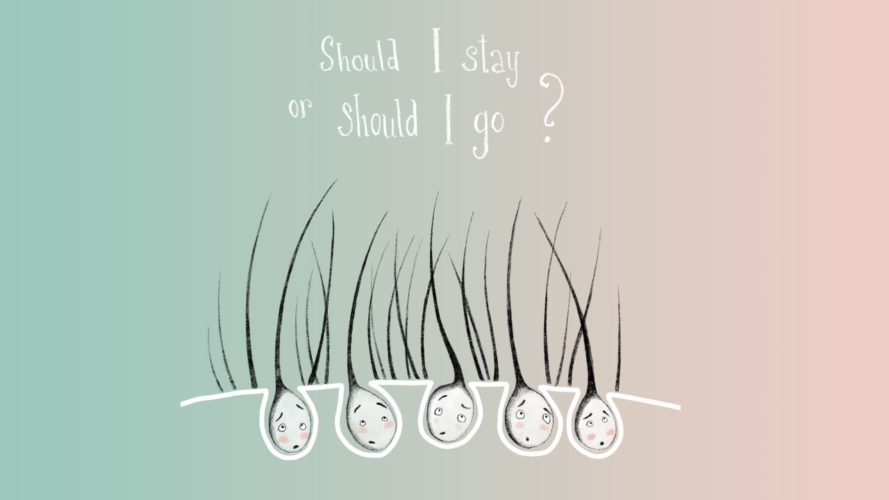Table Of Content

People with sensitive skin may benefit from using natural or hypoallergenic products on their legs. Ingrown hairs occur more frequently in areas that experience a lot of friction, such as the thighs. This may help coax the hair up and out through the skin if you can see the hair and if it’s very close to the surface, says Dr. Weschler. Exfoliation should be approached carefully, as it causes inflammation, which leads to hyperpigmentation and may not be very helpful in resolving ingrown hairs.
Do home remedies for ingrown hairs work?

A red, raised, (often painful) bump, ruining the landscape of your otherwise flawless skin. Ingrown hairs happen, but before you reach for the tweezers or get to squeezing, read this. We asked top dermatologists for their best advice on how to get rid of ingrown hair, and, more importantly, how to prevent these pesky bumps from cropping up in the first place. This can help because apple cider vinegar contains anti-inflammatory properties that help soothe irritated skin, Engelman says.
Reason For Skin Growth Under Nails - POPSUGAR
Reason For Skin Growth Under Nails.
Posted: Mon, 25 Mar 2024 07:00:00 GMT [source]
What medications are used to treat ingrown hair?
In most cases, ingrown hairs are treated at home and do not require medical attention. There are a few times when a doctor may need to be involved. These simple practices are often enough to make the ingrown hairs go away on their own. When a hair grows to about 10 millimeters in length, it will usually release itself from the follicle. When this happens, the hair in the follicle can become stuck or grow sideways into the skin, causing an ingrown hair.

Are there ways to prevent ingrown hairs?
Ingrown Hair Removal: How to Get Rid Of Ingrown Hairs - Men's Health
Ingrown Hair Removal: How to Get Rid Of Ingrown Hairs.
Posted: Tue, 03 Oct 2017 07:00:00 GMT [source]
“If you have an ingrown that’s red, hot, swollen or getting worse, or if you have a fever,” it is likely infected and you need to get to the doctor. “Most of the time when I see this in my office, the person says, ‘I had an ingrown and tried to pop it and made it worse,” she says. Occasionally, infections can turn into an abscess and need to be drained. If these at-home remedies aren’t working, step away from the tweezers and call your doctor. A medical professional can treat ingrown hairs and help you prevent them in the future. If the hair is completely under your skin, avoid the temptation to poke the area with a sharp object and dig out the hair.
And because the hair doesn’t grow back after treatment, you won’t have to worry about ingrown hairs. Another pro tip for shaving is to always exfoliate prior to picking up your razor. If you’re shaving your face exfoliate with the L’Oréal Paris Pure-Sugar Resurface & Energize Kona Coffee Scrub first. An ingrown hair looks like a raised, discolored spot on your skin.
About Mayo Clinic
The site of the ingrown hair will form into a raised bump on the skin that may begin to look like a pimple. The bump will often turn reddish, become irritated and sensitive, and may fill with pus. In the days before your medical appointment, if possible, stop shaving or using any form of hair removal. If shaving worsens your condition, you might want to try a chemical hair removal product (depilatory), such as Nair, Magic, others.
What to expect from your doctor
You can avoid this condition by not removing hair or not shaving very close to the skin. If that's not an option, you might try other hair removal methods that lessen the risk of developing ingrown hair. Individuals who get ingrown hairs on their necks from shaving may switch to trimming instead.
Preparing for hair removal
In some cases, you will be able to see the hair beneath the skin but if you have a spot or painful bump in your beard (or in fact, any area in which you’ve shaved) it could be an ingrowing hair. Apply a hydrating shaving cream or gel, taking time to adequately rub it onto the patch of skin that you’re about to shave. Ingrown hairs are sometimes called razor bumps, shave bumps or barber bumps. Ingrown hairs may just top the list of worst beauty bugbears for being both uncomfortable and unsightly, which is not a multi-hyphenate we can get on board with. In fact 30% of women who groom their bikini area consider ingrown hairs to be one of the biggest hair-removal obstacle, according to a survey commissioned by Venus Gillette. Using creams with salicylic acid can help open the pores and follicles, preventing them from clogging.
Laser Hair Removal
Shaving is more likely to cause ingrown hairs, but they can also occur after waxing. Also, gentle exfoliation is sometimes enough to pull ingrown hairs up and outside the skin, where they can grow correctly. If you want to stick with shaving, do so in the direction of the hair. "Going against the grain may allow for a closer shave, but the closer the shave, the easier it is for your hair to curl back into your skin," says Dr. Frieling. And when you do shave, make sure the blade you're using is fresh and sharp; the duller the blade, the more you're scraping the skin, upping the likelihood of irritation and ingrowns, she adds.
You can’t always prevent ingrown hairs, but you can take steps to lower the chances of them developing. So, if you aren't fussy about feeling 110% smooth, it might be worth trading off to an electrical option for day-to-day, and keeping your manual razor for special occasions only. If you want to lift your hairs pre-shave, use a hot flannel to scruff them up and soften the hair at the same time.
They may also be likelier to occur when the hairs are very short, such as after waxing, shaving, or tweezing. Ingrown hairs often create an inflamed red bump or dot that may itch or cause pain. An ingrown hair may also become infected, forming a pimple-like wound. Start by applying a warm compress to the area, since the heat will soften the skin, says Dr. Solomon.
Problematic pubic hairs can be cut short instead of removed entirely to help prevent ingrown hairs. There are also a few products and treatments available to prevent these ingrown hairs. No matter your hair removal method, exfoliating regularly is a surefire way to help prevent dead skin cells from blocking the hair follicles, says Dr. Icecreamwala. Swipe-on pads make daily exfoliation easier and faster than ever. Try SweetSpot Labs Buff & Brighten Body Exfoliating Pads ($30; ulta.com), which work well on the bikini area, legs, and underarms.
If you see signs of infection, you should visit your healthcare provider. If a person notices that an ingrown hair is infected, they should see a doctor. The area around the hair may appear to be inflamed or red, or there may be a pus-filled bump.
Electrolysis — when a technician zaps each follicle with electricity, killing it — can be very painful but works well for small areas like the chin. How much it costs depends on a bunch of factors as well — a single treatment can be around $50-$100. If your skin is really red, apply a cold compress, advises Dr. Wechsler — an ice pack wrapped in a soft cloth.
Apply a warm, moist — not dripping — washcloth for 10 to 15 minutes, three or four times a day. Warm compresses soften your skin and may help ease inflammation and discomfort by allowing your skin to open and drain if there’s any pus present. Tweezing or pulling ingrown hair is probably one of the easiest and the fastest way to get rid of the ingrown hair.
It’s a strand of hair that grows back into your skin after shaving, tweezing or waxing. Ingrown hairs can affect anyone, but they’re easy to treat and prevent with the right hair removal practices. Hair structure and direction of growth play a role in ingrown hair. A curved hair follicle, which produces tightly curled hair, is believed to encourage the hair to reenter the skin once the hair is cut and starts to grow back. Shaving creates a sharp edge on hair, making it easier to pierce the skin. Properly preparing for hair removal can also help prevent ingrown hairs.












